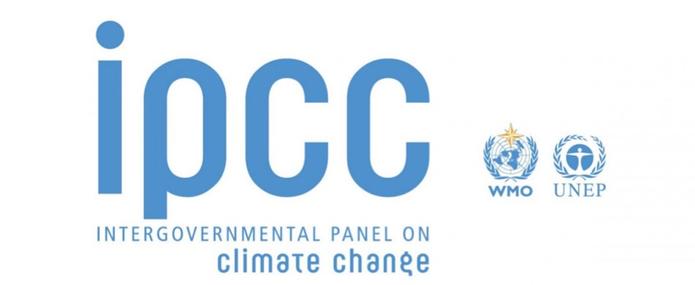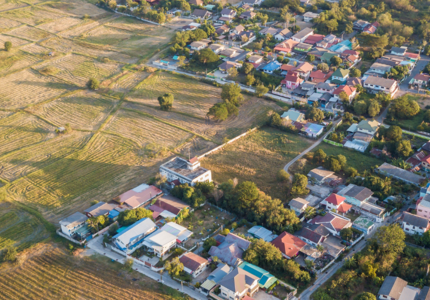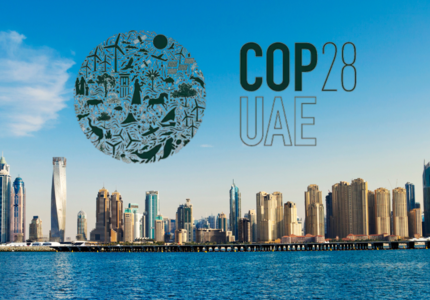A resilient and livable future is still available to us, but only if we take deep, rapid and sustained greenhouse-gas emission cuts during this ‘critical decade’ to limit warming to 1.5ºC with minimal or no overshoot. On March 20th, 2023, the Parties to the Intergovernmental Panel on Climate Change (IPCC) approved the IPCC’s 6th Assessment Report (AR6) cycle’s final output: the Synthesis Report (SYR). This blog post highlights 6 key takeaways from across the report, as well as key political reactions including the UN Secretary General’s proposals for an Acceleration Agenda for global climate action, and a G20 Climate Solidarity Pact.
The SYR Report: what is it and why does it matter?
The SYR achieves an impressive feat: its 37-page Summary for Policymakers (and 3 underlying chapters) summarizes insights from across the IPCC Reports produced in the past 7 years: the Working Group contributions to AR6 (WGI: Physical Science Basis; WGII: Impacts, Adaptation and Vulnerability; and WGIII: Mitigation of Climate Change) and the three preceding Special Reports (Global Warming of 1.5ºC, Climate Change and Land, The Ocean and Cryosphere in a Changing Climate).
As the key standalone scientific input into the Paris Climate Agreement’s first Global Stocktake–whose high-level political conclusion at COP28 this December is expected to signal to the world how governments, businesses, investors and others plan to ‘course correct’ our collective action towards a safe future–the SYR’s key added value is to tease out the most important messages from across AR6, reminding of the urgent situation at hand and offering guidance for the step change of ambitious action needed in the remaining years of this ‘critical decade’.
If the UN Secretary General called the SYR the ‘survival manual for humanity’, it is also because of its critical timing: the upcoming IPCC Assessment Cycle (AR7) is set to conclude in 2028, almost too late to inform action before 2030–even as the SYR underscores our choices before 2025 are essential.
1. A stark observation: unequivocal warming and growing but unequal impacts
The SYR reiterates human activities have unequivocally caused global warming, with global mean surface temperature reaching 1.1°C in 2011-2020 above pre-industrial levels, and atmospheric CO2 concentrations higher now than at any time in at least 2 million years. The key driver of global warming is fossil fuel use: in 2019, around 79% of global GHG emissions came from their use in energy, industry, transport and buildings, and 21% from agriculture, forestry and other land use.
The Report also highlights climate change-driven growing extreme weather events are already causing adverse impacts, losses and damages to ecosystems and humans. About 3.3-3.6 billion people live in contexts highly vulnerable to climate change; people living in highly vulnerable regions were between 2010-2020 15 times more likely to die from floods, droughts and storms than those living in the least vulnerable regions. Mass mortalities of species are already being observed on land and in the ocean, and some ecosystems are getting close to a point of no return.
Policies currently implemented head us towards global warming of 3.2ºC by 2100, and were countries’ nationally determined contributions (NDCs) to be fully implemented, still likely lead us to rising temperatures above the 1.5ºC limit or even above 2ºC.
2. Emissions have to be cut rapidly, deeply, and in a sustained manner over time
The SYR finds our emissions to date already ‘bake-in’ the level of global warming to 1.5°C, which we will reach as soon as in the early 2030s. Yet the IPCC is also crystal clear that keeping temperature rise at the safe level of 1.5ºC with limited to no overshoot is still within our reach, but requires urgent, deep, and sustained greenhouse gas (GHG) emissions reductions. The SYR underscores the dangers of backing away from the 1.5°C guardrail: every increment of global warming brings about escalating risks for humanity and ecosystems (including of triggering climate tipping points), and reduces adaptation and mitigation options. Further, both 1.5ºC and 2ºC pathways require similar radicality of the acceleration effort in the next 3 to 7 years to unlock transformation in all sectors.
To reach collective CO2 net zero by 2050 and keep the 1.5ºC goal, CO2 emissions need to be cut by 48% by 2030, 65% by 2035, and 99% by 2050. Some carbon dioxide removal (CDR) will also be required to counterbalance the residual GHG emissions remaining from hard-to-abate sectors such as aviation, agriculture, shipping and hard industry, but the SYR underscores CDR should be used carefully given major sustainability challenges were they to be deployed at large scale.
Source: IPCC Synthesis Report Summary For Policymakers, Figure SPM.1
In line with the collective 2050 net-zero goal, the UN Secretary General urged developed country leaders to increase ambition by updating their net-zero emission goals to reach it as close to possible to 2040–the US, EU, and most other countries currently have a 2050 date–and called on emerging economy leaders to commit or update net-zero goals to as close to 2050 as possible–China’s current net-zero pledge is for 2060, Indonesia’s for 2060, India for 2070.
3. Phasing out fossil fuels: a message clearer than ever before
The IPCC states clearly that the projected CO2 emissions from existing fossil fuel infrastructure exceeds the remaining carbon budget for 1.5°C, while building out all the currently planned fossil fuel infrastructure would result in an 83% likelihood of reaching dangerous levels of warming (2ºC).
To reach net-zero emission energy systems, the IPCC clearly states entails “a substantial reduction in overall fossil fuel use, minimal use of unabated fossil fuels, and use of carbon capture and storage in the remaining fossil fuel systems; electricity systems that emit no net CO2; widespread electrification; alternative energy carriers in applications less amenable to electrification; energy conservation and efficiency; and greater integration across the energy system.”
The IPCC identifies removing fossil fuel subsidies1 as a key policy to reduce emissions–up to 10% of GHG emissions by 2030–yet which needs be structured in such a way to not hurt the most vulnerable groups.
The IPCC also identifies solar and wind energy, energy efficiency, and methane emissions reductions as the least cost and highest mitigation options in the energy sector. Carbon capture and storage (CCS) could bring about some abatement of fossil fuels, yet this 50-year-old technology is still only currently mature for gas processing and enhanced oil recovery–i.e., producing more fossil fuels. The SYR underscores “CCS implementation currently faces technological, economic, institutional, ecological-environmental and socio-cultural barriers,” and the IPCC AR WGIII had highlighted CCS as one of the highest-cost and lowest-potential mitigation options to 2030.
In response to the IPCC’s key findings on fossil fuels, Pacific Island leaders–many of whose countries would disappear with temperature rise above 1.5ºC–are calling governments to commit to “managing a global, equitable, and unqualified phase out of coal, oil and gas” at COP28 and beyond, while this week the at the Copenhagen Climate Ministerial the Egyptian COP27 President noted consultations will be held, in the run-up to COP28, on phasing-out fossil fuels. The UN Secretary General also issued his Acceleration Agenda, calling governments and the private sector namely to:
- halt coal use by 2030 in OECD countries and 2040 in all other countries;
- reach zero emission electricity by 2035 in developed countries, and by 2040 globally;
- cease all licensing or funding of new oil and gas (O&G) projects, consistent with the findings of IEA, and stopping any expansion of existing O&G;
- phase down O&G production consistent with the 2050 net-zero target;
- Call on to CEOs of O&G companies to present credible, comprehensive, and detailed net-zero transition plans in line with the 1.5ºC goal, that detail clear emission cuts for 2025 and 2030, and efforts to change business models, phase out fossil fuels, and scale up renewable energy.
4. Key for 2030: Protect ecosystems and shift demand
The 2021 IPCC-IPBES co-sponsored Workshop Report was clear that reaching the climate and biodiversity outcomes needed is contingent on coherent action across both. The SYR highlights the importance of protecting and restoring forests and other ecosystems: of all land-use measures, this and improved forest management offer the largest share of economic mitigation potential, with reduced deforestation in tropical regions having the highest total mitigation potential by 2030. The IPCC further underscores the resilience of biodiversity and ecosystem services at a global scale depends on effective and equitable conservation of approximately 30% to 50% of Earth’s land, freshwater and ocean areas. The commitment to halt deforestation by 2030 that 145 countries committed to in 2021 in the Glasgow Leaders’ Declaration on Forests and Land Use is more urgent than ever2 , as is implementing the Kunming-Montreal Global Biodiversity Framework adopted at the UN Biodiversity COP15 last December.
The IPCC also insists that while current CO2 emissions reductions from efficiency measures are dwarfed by rising emissions in multiple sectors, significantly scaling up demand-side action (e.g., reducing demand for energy, shifting diets, energy efficiency measures) could bring about significant emission reductions of 40-70% in sectors such as buildings, land transport, and food. IDDRI has been exploring for the past years key enablers that underpin these actions historically under-emphasized actions by decision-makers, including on what new social contract may be needed.
5. Increase adaptation and integrated action
The SYR highlights some of the key takeaways of the WGII AR6 Report (for a more detailed overview see our previous IDDRI blog). Impacts from climate change will be worse than previously assessed, and while adaptation is happening at national and local levels, it remains insufficient and inadequate in terms of addressing the root causes of exposure and vulnerability. In addition, adaptation limits are being reached in some contexts, and in more territories and sectors in the future, leaving behind some residuals risks that will probably not be overcome. The Report also insists that lack of deep, rapid and sustained mitigation together with accelerated implementation of adaptation actions in this decade will lock in further losses and damages, disproportionately affecting the most vulnerable populations.
The UN Secretary General also insisted on the need to safeguard the most vulnerable communities, through the multilateral development bank reform, delivering on financial commitments from Copenhagen, Paris, Glasgow, replenishing the Green Climate Fund, providing a roadmap to double adaptation finance by 2025, and implementing this year the new Loss and Damage fund adopted at COP27.
The IPCC finally advances the concept of “climate-resilient development pathways” to express the need for integrating all layers of climate mitigation and adaptation action to be mutually supporting–the panel of adaptation options that are feasible and potentially effective today will become much less so with increasing global warming. IDDRI has been exploring better integration of climate mitigation and adaptation action in a national vision and in concrete projects–including Deep Decarbonization Pathway’s work on Long-Term Strategies for Senegal.
6. The role of finance as a key enabler for transformation
The IPCC highlights increased finance, technology transfer and international cooperation as key enablers for accelerating action to the scale needed. It estimates climate finance needs are 3 to 6 times higher that currently disseminated, yet also finds that sufficient global capital can be made available, if key barriers are overcome to redirecting this capital to the climate action needed most. Scaling up these flows requires committed action by governments, financial regulators including through central banks, and investors.
In this sense, the UN Secretary General also called on all governments to prepare national energy transition plans consistent with the action needed to reach 1.5ºC, and make these ready for investors. We’ve also found this finding IPCC echoed strongly in a recent IDDRI assessment on developing Long-Term Strategies in Argentina, Brazil, China, India, Indonesia, Mexico and South Africa– each pointed to barriers to accessing finance as the overarching key enabler for improved climate action. This corresponds also to the lessons learnt when looking at potential or existing Just Energy Transition Partnerships in different African contexts.
Conclusion
The Synthesis Report reiterates black on white all we need to know to address the climate crisis. As the IPCC Chair stated at the Report’s release, the science is clear–political will now need to follow suit. The UN Secretary General’s proposed G20 Climate Solidarity Pact for 1.5ºC–calling “all big emitters make extra efforts to cut emissions, and wealthier countries mobilize financial and technical resources to support emerging economies”–and the discussions on necessary “transformational actions” at the Copenhagen Climate Ministerial held in Denmark earlier this week, are a promising first signal. Yet the heat is on for political processes throughout the year to increase further the ambition, in order to land at COP28–and namely through the Global Stocktake– a clear signal and actions that give trust to all that governments, major economic actors and other decision-makers, are stepping up their response to the scale needed to ensure a safe present and future for all.
- 1 The IEA recently found (https://www.iea.org/reports/fossil-fuels-consumption-subsidies-2022) global fossil fuel consumption subsidies doubled in 2022 from 2021, to reach a never-before-seen number of 1 trillion USD (next to which the still unmet 100 Billion USD climate-finance commitment pales in comparison).
- 2 The question of the accountability and measure of progress on these initiatives and commitments taken outside of and as addition to the UNFCCC and Paris Agreement framework is critical, as transparency on progress and impact is very low for the moment, but it is not the IPCC’s mandate to monitor these performances.






